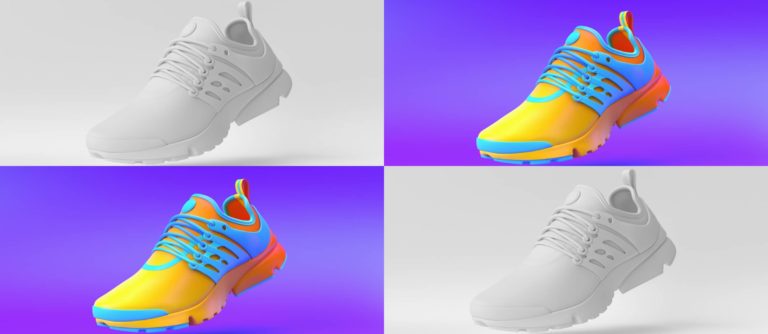
AR continues to merge with other tech trends. For example, it continues to converge with the “shoppability” movement. Everything is becoming shoppable – from YouTube videos to Instagram Stories. And AR adds further value through dimensional product try-ons.
Another trend that’s colliding with AR is the creator economy. Creative tools continue to empower individuals at all skill levels to develop advanced content. And that comes about as 3D and AR content are likewise gaining popularity. The result will be an explosion of AR talent.
One of those democratizing forces is Snap’s Lens Studio. In fact, it just announced at this week’s Lens Fest that it has reached 300,000 lens creators on the platform, who have collectively created 3 million lenses. This is up from 250,000 creators and 2.5 million lenses last year.
Speaking of Lens Fest, AR Insider Editor-in-Chief Mike Boland spoke at this year’s event. And his main theme aligned with all of the above: the collision of AR and the creative economy. So we’re focusing on his session for this week’s XR Talks (video & takeaways below).
The Foundation
Before getting into the dynamics of the creator economy and lens developers, the opportunity is rooted in AR’s growing usage. To wrap some numbers around that claim, ARtillery Intelligence projects that there were 836 million global AR users last year, growing to 1.7 billion by 2026.
More importantly, how does this translate to business opportunity? One answer is brand marketing. Demonstrating products with greater dimensions resonates with brand marketers, who’ve spent most of the past two decades confined to tiny boxes in mobile banner ads.
AR conversely lets them break out of those confines and literally think outside the box by letting consumers visualize products in their full 3D glory on “faces and spaces.” Beyond creative juices, AR’s appeal in marketing lies in its measurable campaign performance.
For example, formats like sponsored lenses, demonstrate real performance relative to 2D benchmarks. We’re talking everything from upper-funnel engagement (e.g., dwell times up to 5 minutes) to lower-funnel action, such as tripling eCommerce conversion rates.
And though there’s been a great deal of adoption and excitement among brand marketers for all these reasons, we’ve barely scratched the surface. The estimated $3.3 billion spent this year on AR ad advertising is only half a percent of the $738 billion spent annually on advertising.
Demand Driven
How does all the above relate to the creator economy? In short, growing levels of brand marketing activity and investment will create demand for lens talent. If AR demand continues to ratchet up among brand marketers, the demand for AR creators will ratchet up with it.
This is analogous to the demand-driven value for web and app developers over the past decade. It turned out to be a heck of a career choice. AR creators over the next decade could see something similar, including not only job security but lots of leverage (read: income).
And we’re already seeing that. A few examples we’ve tracked include lens developers that make $750,000 to $1.2 million per year at the high end. In most cases, they got started simply by creating lenses as a hobby or passion, then caught the eyes of brand marketers.
Lens creators today are also empowered by platforms and communities. Sticking with Lens Studio as an example, there are more and more tools baked in to accelerate lens developers. That includes analytics, portfolio tools, grant funding, and networking for paid work.
There’s also a fair amount of design inspiration in these platforms, which will be valuable as AR UX standards evolve. We’re already seeing movement towards AR that has greater everyday utility, including a shift from selfie filters (play) to world-facing lenses (productive).
Heat-Seeking Missile
As these lens standards and use cases develop, not only are they valuable on their own but as a training ground for AR’s next generation: smart glasses. In fact, refining skills with world-facing lenses will serve AR creators well, as smart glasses’ UX is all world-facing.
Possible lenses include identifying products in the real world and letting you buy those products on the spot (back to the shoppability trend). There’s also ample opportunity for local discovery such as finding out about a new restaurant through line-of-sight informational annotations.
To be clear, the day when we’re all wearing AR glasses is still years away for technological and cultural reasons. But as that day approaches, smart creators will already have had a few years to develop the right muscles and hit the ground running with world-facing AR.
Of course, all of the above is a moving target and we’ll have to continue to track it closely over the coming years and course correct like a heat-seeking missile. But many signals today point to AR’s growth as a consumer utility, and the creator economy’s role in making it all happen.
See the full talk below…






